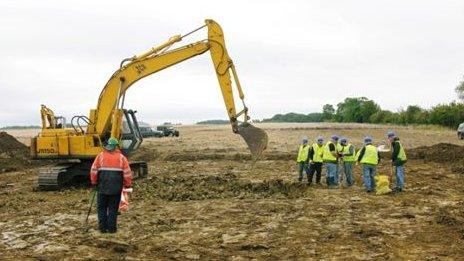Bicker World War Two Lancaster crash crewman's family traced
- Published
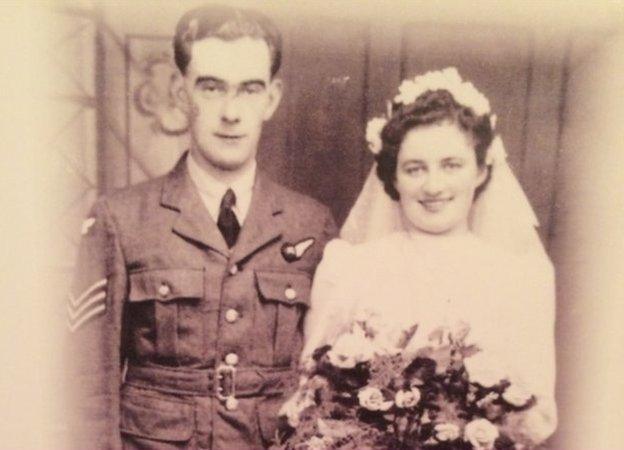
It is 70 years since a Lancaster bomber crashed at Bicker in Lincolnshire, killing all seven of the crew. Their families were never told where they died, but an appeal has now been launched to trace them.
Here, the widow of one of the airmen explains how she finally discovered and visited her husband's resting place, more than 60 years after he died there.
Kathleen Bannan was a newlywed, aged 23 and five months pregnant, when her husband was killed in a plane crash on 10 April 1944.
Only one crew member's body was recovered, and Kathleen's husband is thought to have been buried with the plane when it penetrated the ground.
To add to the tragedy, Flt Sgt Joseph Bannan's family were never told where the Lancaster bomber crashed.
"It was a terrible time, and of course we couldn't find any information then because it was for security reasons," says Kathleen, now 93.
"His parents were heartbroken and distraught because there were no remains to be buried in the family grave."
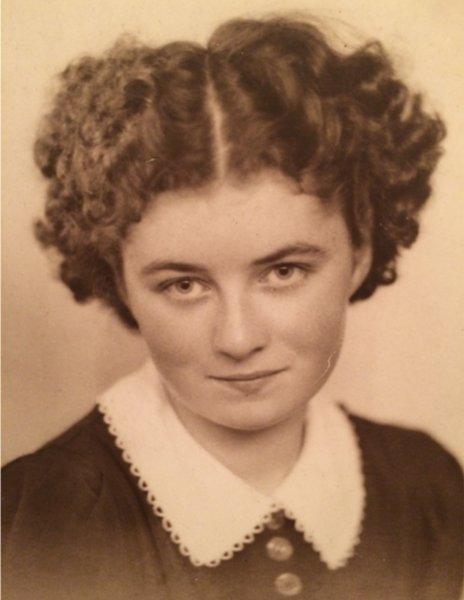
Kathleen worked at RAF Elsham Wolds
Kathleen had met Joseph in May 1943 and they married in the September.
"I had only known him weeks when he took me up to Cumbria to meet his parents," says Kathleen.
"We said we would get married in September if he survived."
They met while she was working in the post office at RAF Elsham Wolds in Lincolnshire, where he was stationed.
"It was very romantic," says Kathleen.
"Air crews came in the post office but I didn't meet him then.
"I went to a pub in Scunthorpe, I was with my two WAAF [Women's Auxiliary Air Force] friends and he was with his crew. We sat together.
"After that he came to the post office to see me and he asked me out."
Working at the station meant Kathleen was fully aware of the danger Joseph was in.
"Young men that would come in the post office, they would go and wouldn't come back," she says.
Kathleen remembers worrying Joseph would not return from his operations either.
"I used to go and think about him and think and worry, and in the morning when he was back I would be relieved," she says.

Flt Sgt Joseph Bannan died aged 24
"He did 30 and survived 30 and the last one, I was friends with a little Geordie girl, a WAAF, and she saw them come back in the morning."
When Kathleen heard his plane had come back, she knew they would marry.
Flt Sgt Bannan began training other air crew, and his family were relieved, believing he was out of danger.
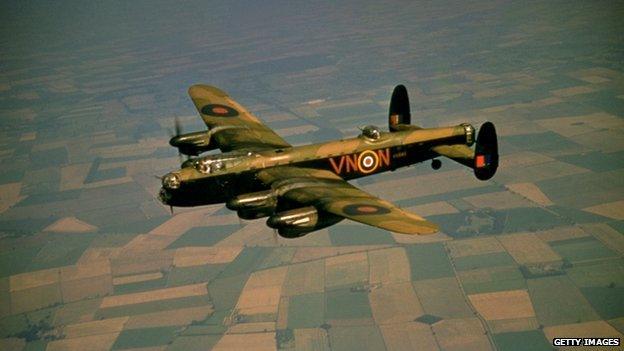
Flt Sgt Joseph Bannan died in a Lancaster bomber
But seven months after marrying, Mrs Bannan received a telegram.
"We didn't ask questions when the war was on and the CO [Commanding Officer] and padre both wrote to me and said for security reasons they couldn't give me information," says Kathleen.
"We didn't know anything else, but that he was definitely dead, that the plane had come down and we found out that much.
"We gathered it was in England. But as the years went on you just accepted it."
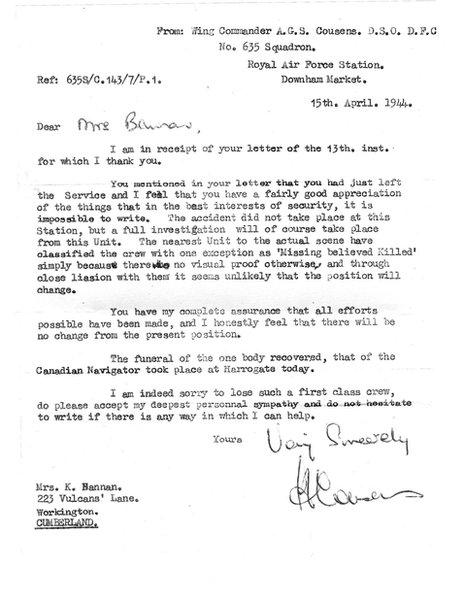
Flt Sgt Bannan was classified "missing believed killed"
The Lancaster ND 820 had been on a training flight which set off from RAF Downham Market, in Norfolk.
The plane got into difficulties, possibly because of a problem with the autopilot, and caught fire flying over Swineshead in Lincolnshire.
It eventually crashed at Bicker, 22 minutes into its flight.
A tree took much of the blast from the crashing aircraft, saving a farm worker in the field behind it, and the tree still grows at an angle to this day.
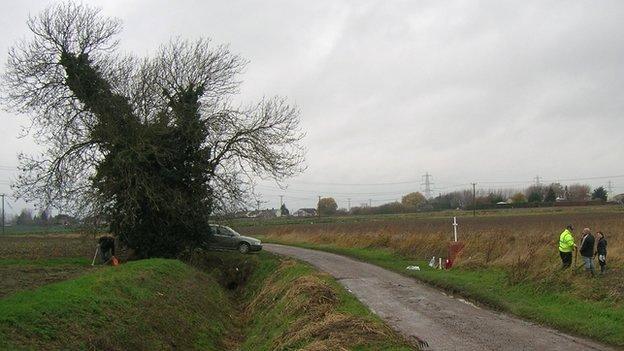
A tree opposite the memorial grows at an angle
One crew member, who parachuted from the plane, was found hanging from the tree and was buried at Harrogate (Stonefall) Cemetery in Yorkshire.
But the rest of the crew have never been recovered.
Kathleen gave birth to her daughter four months later, in August 1944, and named her Josephine, after her dead father.
She later remarried, becoming Kathleen Farley, and didn't discover where her first husband died until she was in her late 80s.
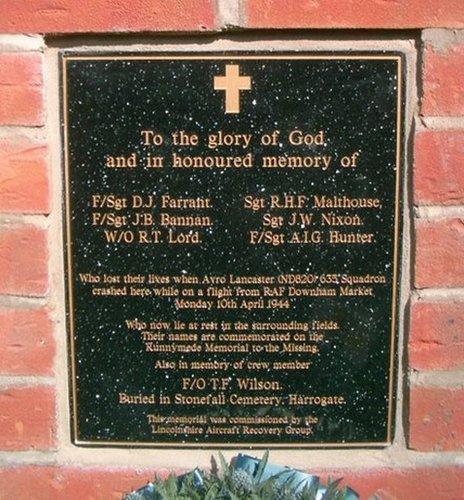
There is a plaque on the memorial
She only found out because Josephine's son found details on the internet about a memorial at the impact point of the crash.
It had been commissioned in 2004 by Lincolnshire Aircraft Recovery Group (LARG).
"Whenever a plane crashed in the war little was said about it," says Dave Stubley, from LARG.
"It was only the people very close to it that knew about it, or the local schoolboys used to bike out to it and have a look."
Mr Stubley says there is still a dip in the road caused by the force of the crash.
"It went directly down, straight down, and actually moved the road," he says.
"The road was a vital road so they would make the decision, instead of taking weeks digging it [the wreckage and human remains] up by hand, they would have to reinstate the road.
"Rather harsh, but it was wartime and that had to happen."
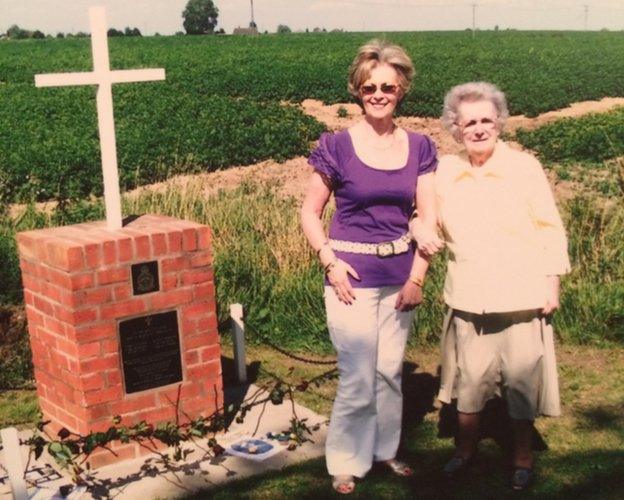
Kathleen and her daughter have visited the memorial
Kathleen has visited the memorial herself and several members of her family are visiting again on Saturday, for a memorial service to mark the 70th anniversary.
"I just felt so sad and so admiring of those young men who had made such an effort to have a memorial built," says Kathleen.
The discovery has meant so much to her family that one of Flt Sgt Bannan's great-grandsons added Joseph to his own name, in tribute.
"It's just so sad," says Flt Sgt Bannan's daughter, now 69 and called Josephine Maddox.
"All I thought about was my father's parents. If they had only known where he had come down and been able to visit, it would have meant so much to them.
"My grandsons are in their teens and I look at them and think it could have been them."
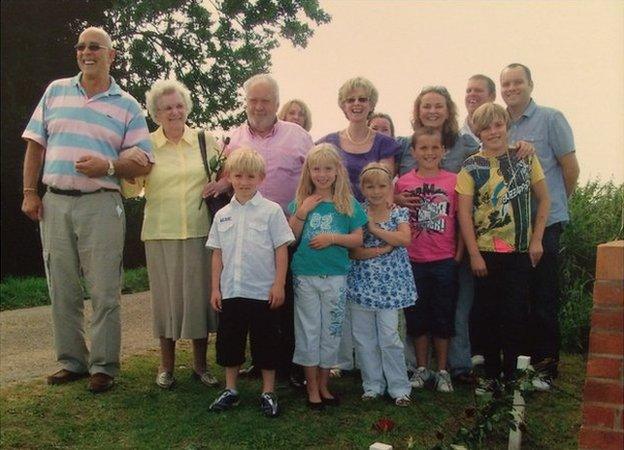
Kathleen's family have visited the crash site
LARG is legally prevented from contacting relatives of crew members, but the Mayor of Boston, Councillor Paul Kenny, has appealed for them to come forward.
"It is sadly poignant to attend the memorial site and realise that six of the crew are still out there in the fields," says Mr Kenny.
"I won't last much longer, I don't think," says Kathleen, "but for Joe's sake I would like other people to turn up."
- Published27 March 2014

- Published24 October 2013
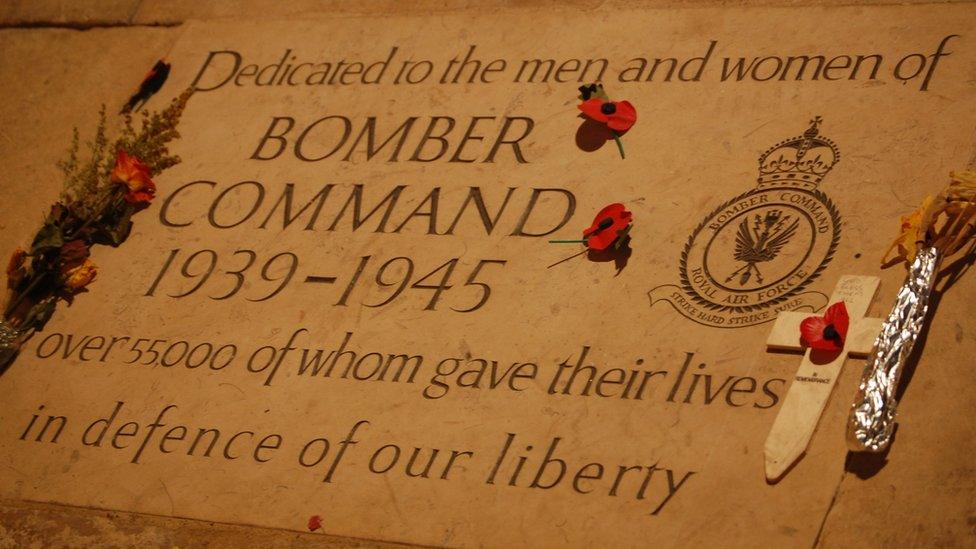
- Published5 March 2013
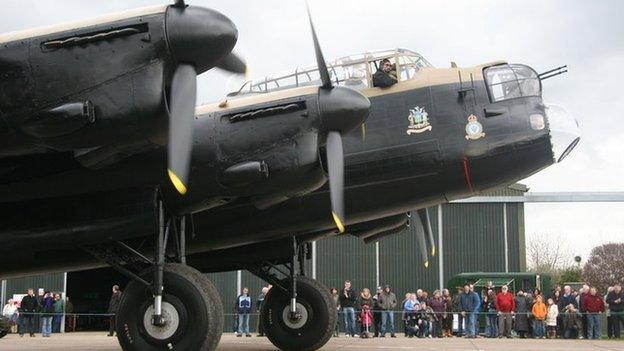
- Published24 November 2012
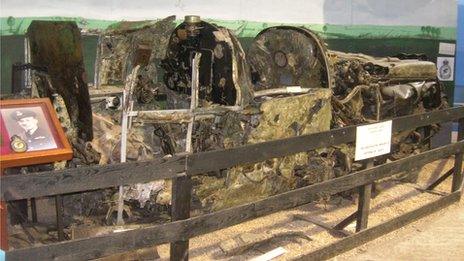
- Published18 May 2012
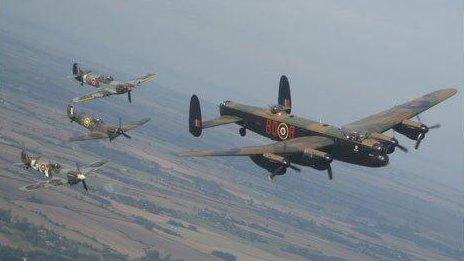
- Published4 May 2012
